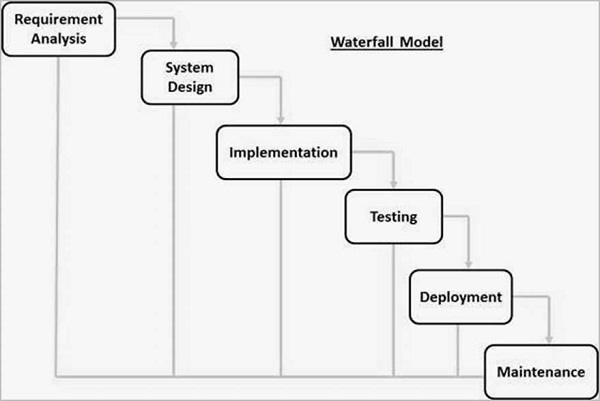The waterfall method was the first Software Development Cycle Model used widely in Software Engineering. In this method, the process of software development is divided into separate phases, the outcome of one of phase acts as the input for the next phase sequentially.
A representation of different phases of waterfall model.

The phases of the waterfall method are:
1. Requirement Gathering & Analysis: Ask the client what their needs and expectations are.
2. System Design: Requirements for the System and Hardware specification to define overall architecture.
3. Implementation: Program is developed in small units and tested (Unit Testing).
4. Integration and Testing: All units are put together and tested for faults and failures.
5. Deployment: After functional and non functional testing, the product is delivered.
6. Maintenance: Regular updates and issue resolving.
The advantages of using the Waterfall Method are:
- Is easy to comprehend
- Allows for departmentalization and control
- Each stage can have a predetermined due time
Although, it has the disadvantage of being unable to go back if one of the steps has a mistake that was discovered in the next stages.
Tech Target. (2016). waterfall model. August 8th, 2016, from Tech Target Website: http://searchsoftwarequality.techtarget.com/definition/waterfall-model
http://www.tutorialspoint.com. (2016). SDLC – Waterfall Model. [online] Available at: http://www.tutorialspoint.com/sdlc/sdlc_waterfall_model.htm [Accessed 12 Sep. 2016].

